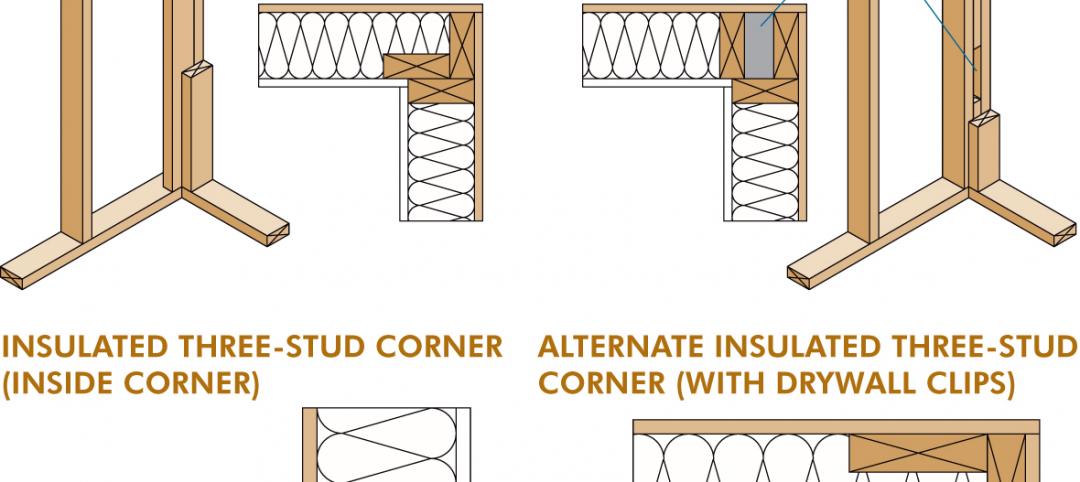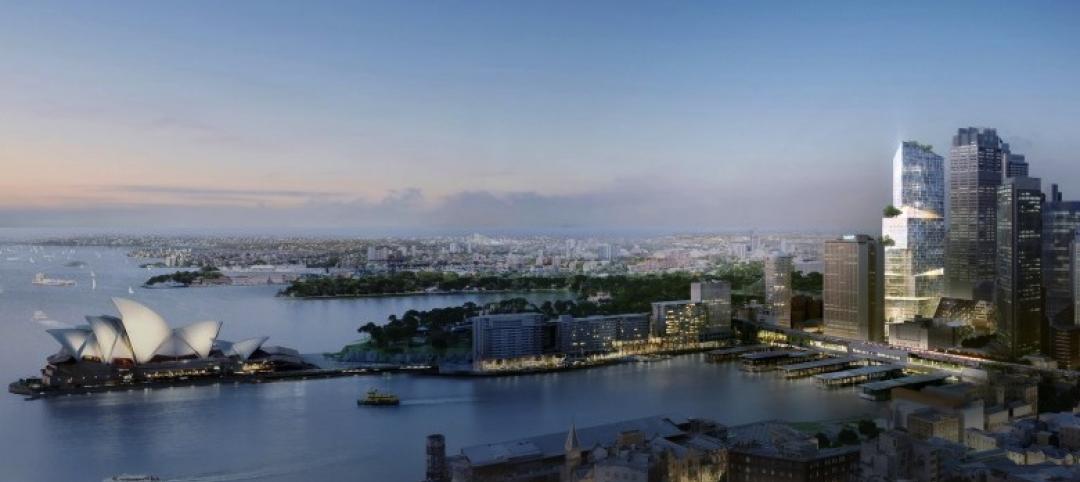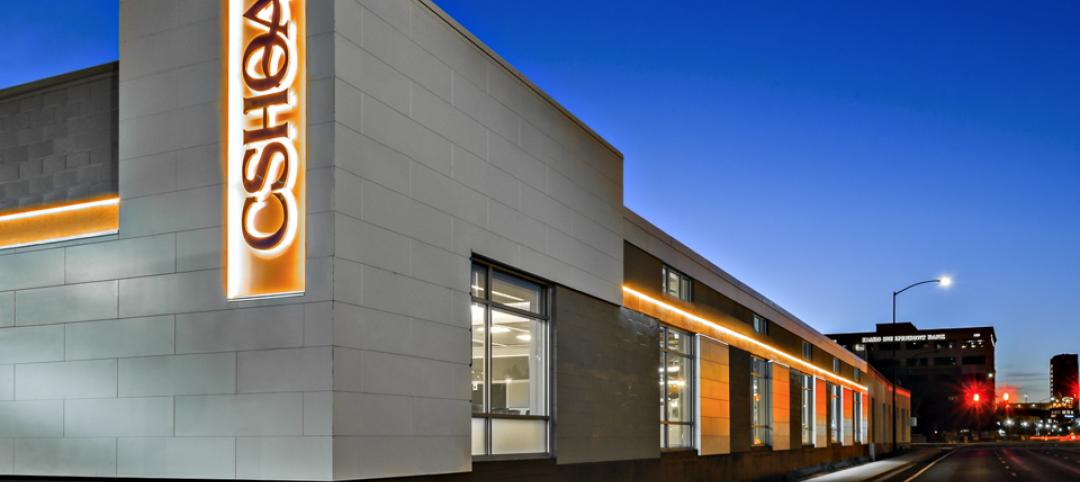The new Los Angeles headquarters for fast-growing Califia Farms, a brand of dairy alternative products, was designed with the post-Covid hybrid work environment in mind. Located in Maxwell Coffee House, a historic production facility built in 1924 that has become a vibrant mixed-use complex, the office features a café bordered by generous meeting rooms.
The café includes a bar and tasting room, with a sizable screen that displays the company’s digital media work. The two-level café, staffed by a barista, is a central hub for meeting, socializing, and indulging in Califia’s own plant-based milks, creamers, and frozen desserts.
“As soon as you step inside the office, you’re transported to the inviting ambiance of a bustling café,” says Alexis Dennis-Huether, the project's lead designer and Associate Principal with SLAM. “Rather than being greeted by a traditional receptionist, there’s a friendly barista, setting the tone for a unique and memorable experience. This entrance creates an impactful first impression that perfectly captures the brand's bold and playful personality.”
The challenge of accommodating a large team of 200 staff members within a 30,000 sf space inspired design firm SLAM to get creative with multi-purpose, open concept areas, according to a news release. This approach allowed for a stronger emphasis on functionality and flexibility.
Hybrid office design includes tasting room, indoor-outdoor connection
Hybrid office models can lead to worker isolation, but SLAM designed the space to counteract this risk. Large amenity spaces offer flexibility for chance encounters, collaboration, and meetings.
Equipped with kitchen appliances including a black electric cooktop and stainless-steel refrigerator, and the technology of a meeting room, the tasting room serves as a research and development space, where staff create, test, and refine products. It also becomes a relaxed setting for team activities, break-out meetings, and lunch preparation.

Throughout the office, 15% of workstations are dedicated to hoteling, all bathed with an abundance of natural light through large windows and skylights. Meeting rooms are equipped with high-quality video-conferencing solutions, allowing for seamless hybrid meetings and teamwork.
One design goal was to create an environment that interfaces with the public space outside. Creating vital indoor-outdoor connections, branding elements and office operations are visible from the street while roll-up garage doors open out to a patio to extend the office atmosphere into the downtown streetscape. Because of its strong street presence, Califia has become a friendly neighborhood fixture, fostering an important sense of community in this evolving area.
The office is adorned with abstract interpretations of the company’s brand speaking to a distinct identity and spirited culture. Califia Farms’ signature amphora-shaped bottle, with its distinctive curves, presides over the café lounge as a tinplated metal silhouette, adding a striking and eye-catching element. The continuous and smooth lines of the bottle are captured in the curvatures of the café bar while a more abstract interpretation of their product design is stamped into the carpet pattern.
Bold brand colors of red and blue are balanced against natural materials. Vermilion red encased banquette niches are recessed into wood-panelled walls, allowing for privacy and comfort. Framed in double pane glass, meeting rooms provide a sense of transparency, and feature small touches that mirror the Califia Farms’ brand, including an outline in a thick red trim that accentuates sharp angles and warm-toned finishes.
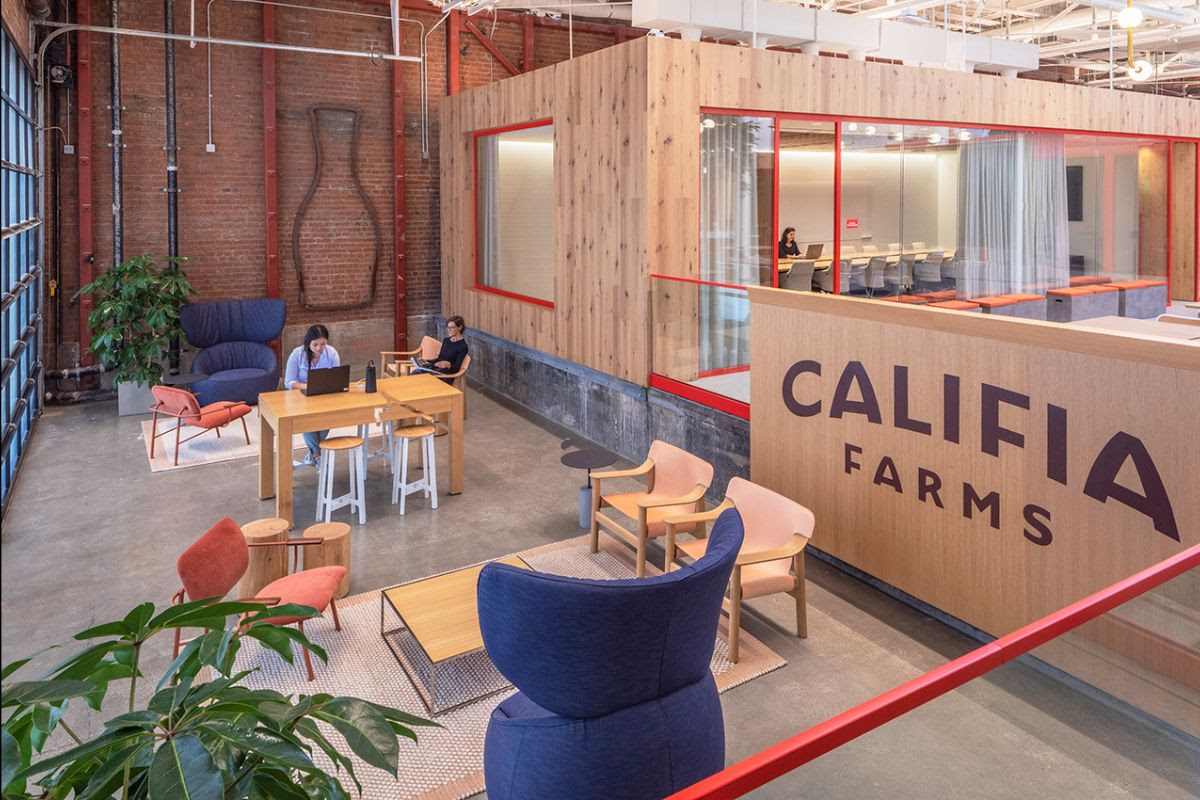
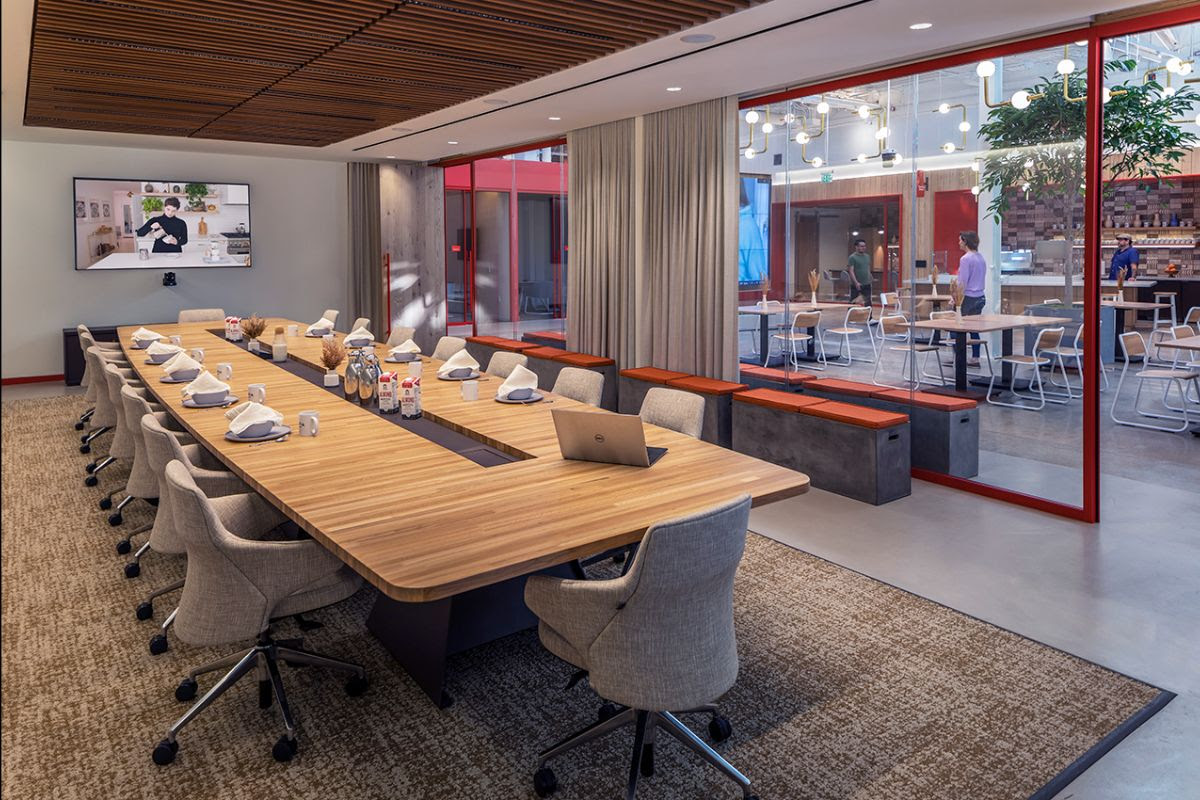


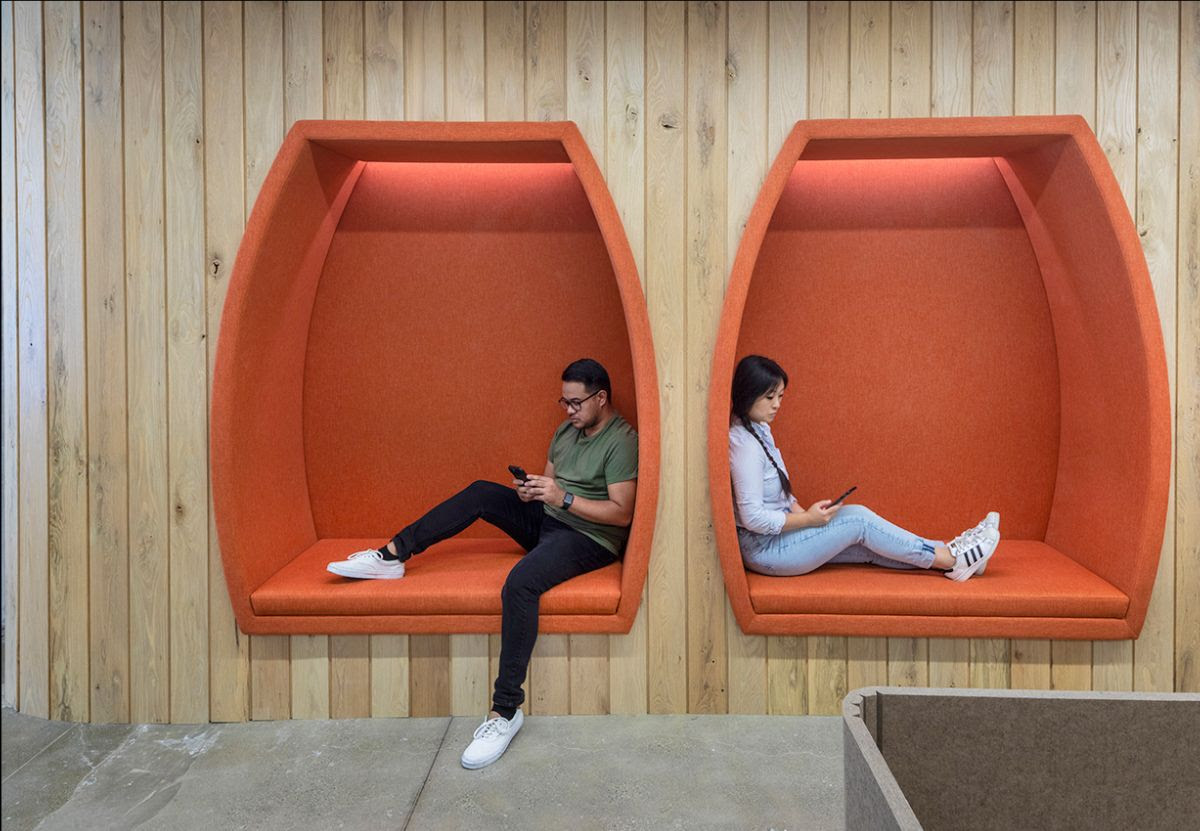
Related Stories
Sponsored | | Oct 7, 2014
Boost efficiency with advanced framing
As architects continue to search for ways to improve building efficiencies, more and more are turning to advanced framing methods, particularly for multifamily and light commercial projects.
| Oct 6, 2014
Houston's office construction is soaring
Houston has 19 million square feet of office space under construction, 54% more than a year ago, and its highest level since the booming 1980s, according to local news reports.
| Oct 2, 2014
Budget busters: Report details 24 of the world's most obscenely over-budget construction projects
Montreal's Olympic Stadium and the Sydney Opera House are among the landmark projects to bust their budgets, according to a new interactive graph by Podio.
| Sep 30, 2014
With its 'stacked volumes' scheme, 3XN wins bid to design high-rise in Sydney
By dividing the 200-meter building into five separate volumes and placing atria throughout each volume, the spaces become smaller, more intimate social environments, according to the Danish architects.
Sponsored | | Sep 25, 2014
Architects transform warehouse into office space while preserving its historic nature
When it came time for CSHQA, an award-winning, full-service architecture and engineering firm, to move office locations, they didn’t need to look far. The 20,000-square-foot warehouse was not only a mere three blocks away, its renovation would be an ideal demonstration piece to show existing and potential clients.
| Sep 25, 2014
Look to history warily when gauging where the construction industry may be headed
Precedents and patterns may not tell you all that much about future spending or demand.
| Sep 24, 2014
Architecture billings see continued strength, led by institutional sector
On the heels of recording its strongest pace of growth since 2007, there continues to be an increasing level of demand for design services signaled in the latest Architecture Billings Index.
| Sep 23, 2014
Cloud-shaped skyscraper complex wins Shenzhen Bay Super City design competition
Forget the cubist, clinical, glass and concrete jungle of today's financial districts. Shenzhen's new plan features a complex of cloud-shaped skyscrapers connected to one another with sloping bridges.
| Sep 23, 2014
Designing with Water: Report analyzes ways coastal cities can cope with flooding
The report contains 12 case studies of cities around the world that have applied advanced flood management techniques.
| Sep 22, 2014
4 keys to effective post-occupancy evaluations
Perkins+Will's Janice Barnes covers the four steps that designers should take to create POEs that provide design direction and measure design effectiveness.



